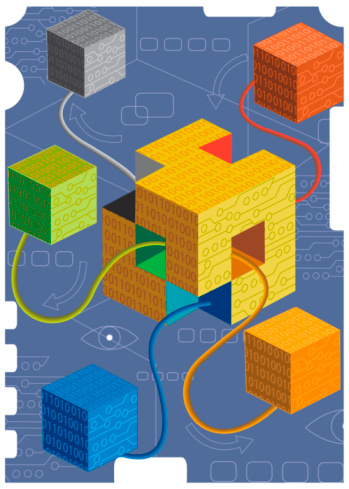Tags and embedded metadata are the weak links in IP reporting, leading to royalty underpayments and excessive royalty management costs.
Hard IP suppliers track the use of their IP by embedding VSIA metadata and tags into their OASIS and GDSII layout views. This metadata specifies the type of the IP and its owner. Foundries then scan customers' taped out designs for the embedded data, reporting IP usage to suppliers for royalty payment. Unfortunately, the embedded data is easily modified or corrupted by design tools, preventing proper accounting for royalties.
Commercially available 3rd-party physical (hard) IP helps fabless design houses focus on the core design capabilities that differentiate them from their competitors. In turn, the IP suppliers rely on royalties paid by the foundries, determined by reports of IP usage in fabricated designs.
The costs to report and collect 3rd party IP royalties can be high for everyone involved. The tags and other IP metadata that IP suppliers embed in layouts can be easily modified or removed before the fabless design house tapes out the design to the foundry. Whether or not this is deliberate, it prevents IP suppliers from knowing just how much of their IP is being used. As a result, IP suppliers continue to request audits of foundries and their fabless customers. The costs of these audits continue to be a burden shouldered by all parties involved in the use of 3rd party IP.
The cost of an audit can be several hundred thousand dollars. The general rule of thumb is that the return of an audit needs to be 4-5x the cost of the audit to make it worthwhile. Thus the audit needs to find $0.8M to $1.0M of uncounted IP or it will not be worth the investment. If IP underreporting is 10-20%, an IP provider may need sales of $5M to $10M to justify paying for an audit. The only exception would be for high-value or high usage count IP where the underreporting rate is expected to be much higher.
The administration of hard IP royalties costs the entire fabless-to-foundry ecosystem countless lost revenue, profits, and trust, potentially damaging the entire fabless/foundry/IP supplier relationship. The high cost of collecting IP royalties threatens the viability of smaller, more innovative IP companies. The resulting loss of innovation hurts everyone in the ecosystem.
Yotta's Hard IP Royalty Auditor automatically scans a GDSII and/or an OASIS file and compares the detected IP against a golden set of IP of known ownership. The technology then reports ownership details (company, instances, IP type, etc.) that are based on the IP's DNA rather than relying on any type of metadata and/or tags that had been embedded in the IP. The Auditor runs at 800-1200 MB per minute. It runs a complete audit of all cell hierarchy within the file and even reports the cell-level details for partial IP matches.
UNCOLLECTED HARD IP ROYALTIES
Difficulties in Reporting IP for Royalty Payments
"The Company's technology established a common expectation amongst suppliers and customers regarding matters of OASIS compliance, performance and interoperability"
Naoya Hayashi
Electronic Device Laboratory
Dai Nippon Printing Co., Ltd
 | ||||
OAS = OASIS
GDS = GDSII
Workflow Auditor Point Tools
TM
®
© Getty Images
NEW at Yotta Data Sciences
* US Patents 9,122,825, 8,555,219, 8,266,571 and 7,685,545.
International Patents: China 200980129771.8, Japan 4768896, Korea 10-1580258, Israel 209907, European Patent 2310967.
OASIS® is a Registered Trademark of Thomas Grebinski
February 16, 2024- Yotta is offering, to qualified partners, a six-month evaluation-period, with support, for its SEMI P39-0416 OASIS Reader/Writer Source Code.
Visit Page: OAS Reader/Writer
Visit Page: OAS Source Code




